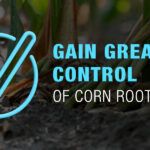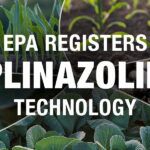How to Get the Most From Spray Drones
Land the best results by knowing all spray drone regulations before takeoff.

Consumer drone technology has surged in the last 10 years. You don’t have to be a pilot, computer expert or gamer to fly one. Even if you’re not tech-savvy, you could probably manage to fly a consumer drone with just a short period of basic instruction. Purchasing and flying a drone are the easy parts. Using them appropriately, effectively and practically for agricultural applications — especially spraying pesticides — requires more effort and research.
“The biggest excitement around drones is their accessibility. Anybody and everybody can get their hands on them and use them,” says Neill Newton, global drone application technical manager at Syngenta. “The greatest challenge for effectively using drones for spraying is lack of standardization.”
Understand Spray Drone Options
Ground spray rigs and manned aircraft have a host of international and U.S. standards of operation. According to Newton, this provides growers with a thorough understanding of how the machines are built and how to operate them to get predictable results. On the other hand, there are a lot of variables for drone options with few instructions on how to effectively use them, leading to a lot of confusion.
Growers can choose between four-rotor and eight-rotor options, hydraulic nozzles or rotary atomizer nozzles, 2-gallon capacity up to nearly 20 gallons, and a few thousand dollars to north of $45,000. Each option chosen can impact the application.
For example, the heavier a drone is, the more downwash it has. The type and position of the nozzle will impact droplet size and spray swath. Application volumes are significantly reduced compared to traditional ground spray technologies.
“It’s really easy to make an application, but it’s also really easy to make a bad application,” Newton says. “At Syngenta, we’re focused on understanding how our crop protection products perform using drone technology so we can help customers use drones in the safest, most effective and most efficient ways possible.”
At Syngenta, we’re focused on understanding how our crop protection products perform using drone technology so we can help customers use drones in the safest, most effective and most efficient ways possible.
Drones at Work
There are many uses for drones in agriculture, from checking livestock to providing insightful data for field research and crop management. Spray drones have a strong foothold for spray applications that typically require a backpack sprayer. When terrain is tough, a drone can make quick work of projects that otherwise require a lot of physical effort and man-hours to complete.
Ideal drone tasks include spraying for invasive weeds and treating bodies of water as vector control for mosquitoes in remote or rough areas.
“In these cases, a drone can likely take the place of a backpack sprayer and do a satisfactory job,” Newton says.
Another place application drones are taking off is with specialty vegetable and fruit growers. Drones provide a quick option for time-sensitive applications. Timely, and more affordable applications also appeal to large-scale row crop producers.
“It’s no secret there’s a labor shortage. It can be tough to get over a field in a timely manner, especially on tall corn,” Newton says. Growers can face a long, worry-filled wait for manned aerial applications. With a drone, growers can potentially treat crops threatened by insects or disease on their schedule.
“The most common products we see being applied by drones in cropping situations are fungicides,” Newton says. According to The Ohio State University Extension, fungicide applications on wheat, corn and some soybean acres have dominated the use of spray drones in the U.S. through 2023. The acreages are still comparatively small.
“Drones are not taking the place of a ground rig or manned aircraft. They’re just another tool producers are increasingly valuing as an option,” Newton says.
Get Results After Growing Pains
Drone technology is a classic case of running — or, in this case, flying — before crawling. Spray drones are an intriguing tool, but one that still has some significant growing pains to work through.
Covering a lot of acres with a drone isn’t currently an efficient option. Battery life is the limiting factor. Significant improvements need to be made on this front, and Newton has yet to see any drastic improvements in the seven years he’s worked with drones.
“The only significant factor standing in the way of having 100-gallon drones in the air is battery capacity,” Newton says. Heat is also a challenge, which greatly reduces battery capacity and taxes the drone.
In ideal conditions, a drone can apply at rates up to 30 to 70 acres per hour depending on the product. Spray volumes differ significantly between drones and ground rigs. Ground rigs will apply 10 to 20 gallons of spray volume while drones use 2 to 4 gallons per acre for the same product.
Even when conditions are right, a drone application will only be as successful as the operator is knowledgeable.
“You have to understand this piece of equipment and put parameters in correctly or you will not get the effective application you need,” Newton says. “You’re going to see a failure if you don’t have it setup properly.”
Applicators must consider how high they want to fly and how fast, what nozzle type they are using, and what droplet size is needed for the application. Rotary atomizer nozzles can be adjusted with a slide button on the control panel from fine droplets to more coarse, while hydraulic nozzles must be manually swapped out to change droplet size.
With this information in hand, applicators must then evaluate what swath width their equipment can deliver in current conditions to determine an effective spray area. Data is then used to manually dial in the correct settings on their spray drone. Many application drones have presets for application, but they tend to miss the mark, Newton says.
“All these variables are up to the operator to understand and input, which is concerning considering the lack of understanding, research and formal training there is for using drones for spray application,” he says.
Online tutorials can also lead drone applicators astray. Growers and drone operators should get online or in-person training from university Extension resources, which currently provide the most accurate information and advice.
Drone Flying License Required
Get licensed. Even using a small drone to check livestock water quickly shifts the use from hobby to commercial purposes. When a drone is used for work or business, a Federal Aviation Administration (FAA) Remote Pilot Certification is required. This is also known as a Part 107 license.
An additional Part 137 license is required to operate an agricultural spray drone. This is the same license manned aerial applicators are required to carry. Drones weighing more than 55 pounds require additional certificates.
“Please make sure you have the proper licensing. It seems intimidating, but the FAA has made it really easy to get these licenses,” Newton says. “There is also value in the training that comes with preparing for the tests.”
Syngenta has joined forces with other crop protection companies to form a global taskforce to collect data and help guide and support safe and effective use practices for spray drone applications. The Unmanned Aerial Pesticide Application System Taskforce (UAPASTF) is working alongside agencies to generate and submit data to global regulatory agencies, like the U.S. Environmental Protection Agency (EPA).
“We want to provide the EPA with a mechanized model for drone applications like they have for manned aircraft. You plug in the product and application parameters, and run a model to show what drift might look like and assess risk,” Newton says. “Drones aren’t like manned aircraft or ground rigs. They need their own data curve for comparison.”
The task force already has trials running and is generating data.
“Eventually the EPA will require label language for drones. We need enough information to make recommendations for using our products effectively through drones both now and for when those requirements are set,” Newton says.
For now, operators need to work with a trusted adviser with a good understanding of drone application to get the best results. Newton notes university Extension is diving heavily into drone application research, making them a good starting point.
“We aren’t in the business of promoting spray application technology, but we want to enable the technology our customers want to use. If a customer wants to use our products through a drone, we want to be sure they have the information to be successful,” Newton says. “This is part of being good stewards of our products in the marketplace.”
This article has been prepared for informational purposes only and is not intended to provide and should not be relied on for legal or regulatory advice.
5 Min Read
- Small spray drones are easy to fly and widely accessible, filling niche application needs.
- Spray application quality depends on correct data input and parameter settings.
- Syngenta is part of a global taskforce to assess risk and develop application recommendations for best drone spraying practices.























